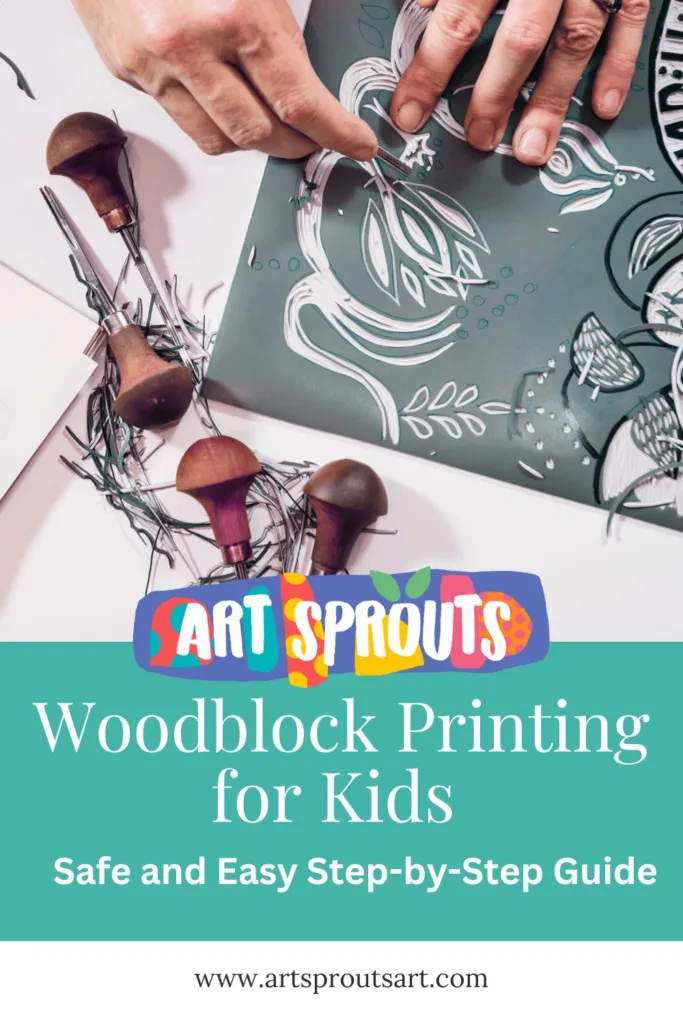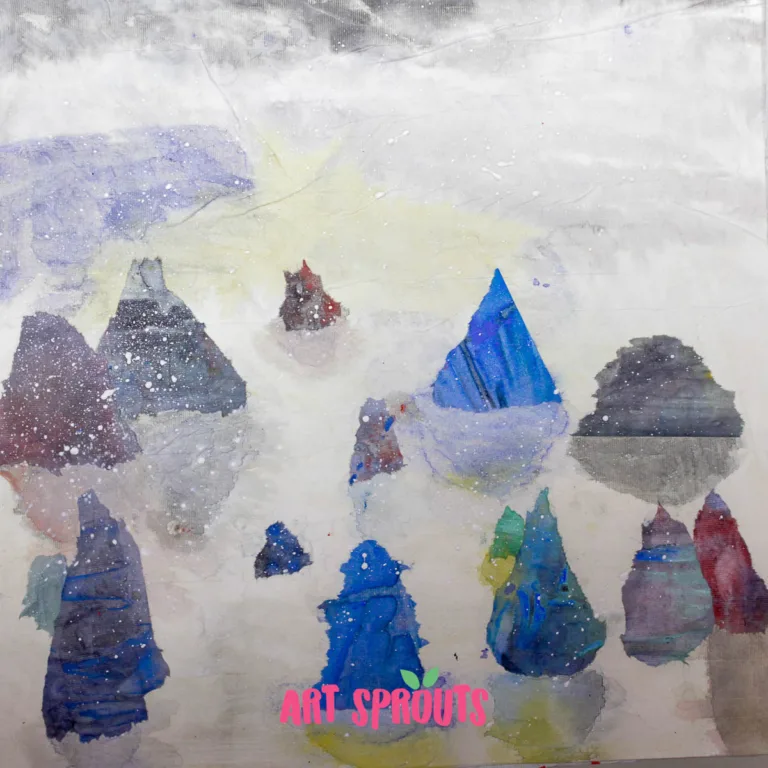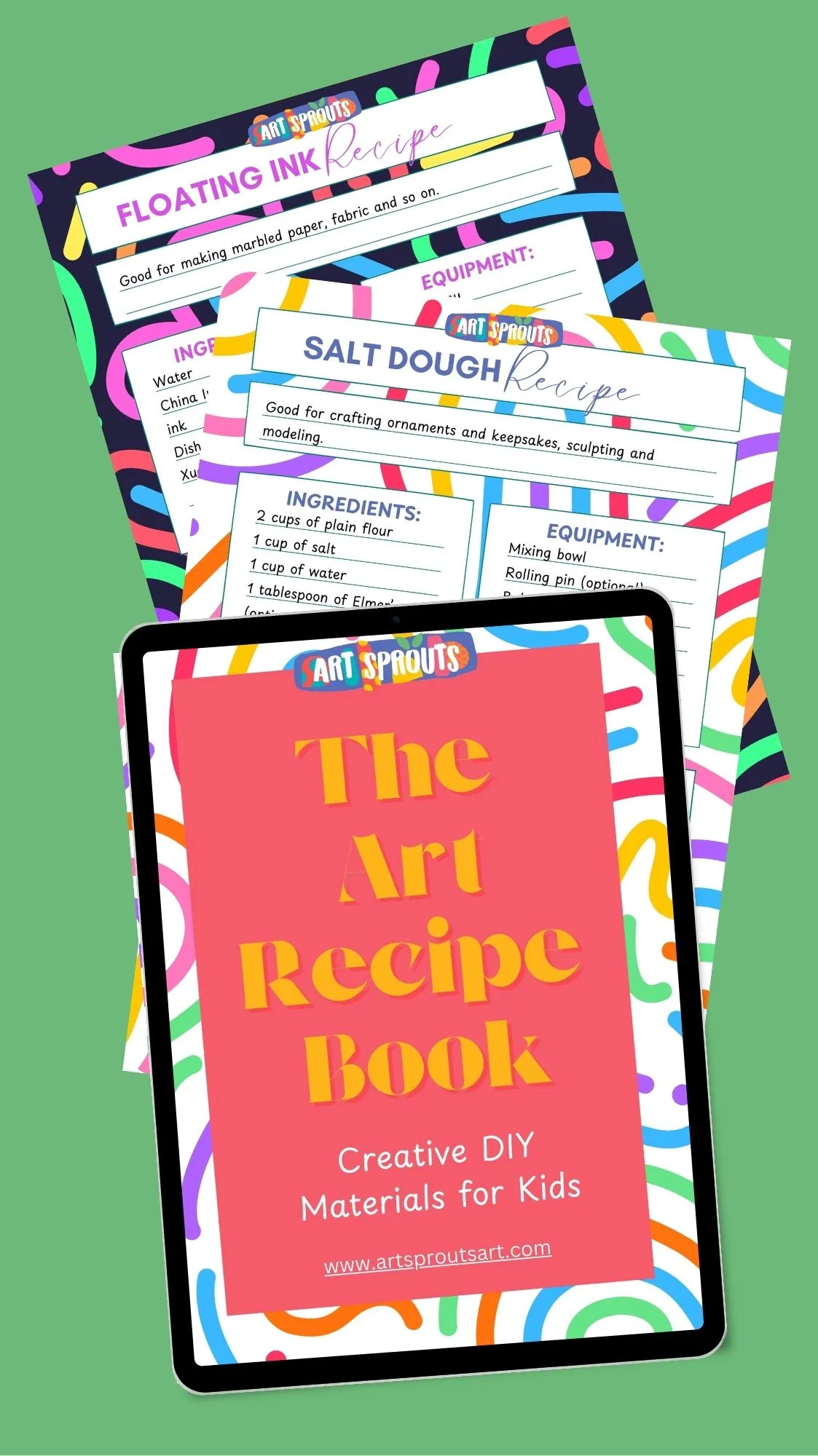Block Printing for Kids: A Step-by-Step Guide
Block printing is a rewarding and hands-on art technique, perfect for children who love tactile and creative activities. Though it may seem intimidating with tools and carving, block printing is surprisingly accessible and provides endless opportunities for kids to explore design, color, and repetition.
In this guide, we’ll walk you through the entire process step-by-step, from sketching your design to printing on paper or fabric.
Plus, we’ll include plenty of tips and tricks to make the experience fun and safe for kids of all ages.
Introduction to Block Printing for Kids
Block printing is one of the oldest forms of printmaking, originating from ancient China and Japan. The basic idea is to carve a design into a block, ink the surface, and then press it onto paper or fabric to create a print. It’s an exciting way for kids to explore both design and creativity while also learning about positive and negative space.
The beauty of block printing for kids is in its repeatability—you carve one block, and you can make as many prints as you like in different colors or materials. The carved block can be reused over and over, allowing kids to experiment with new techniques and ideas each time.
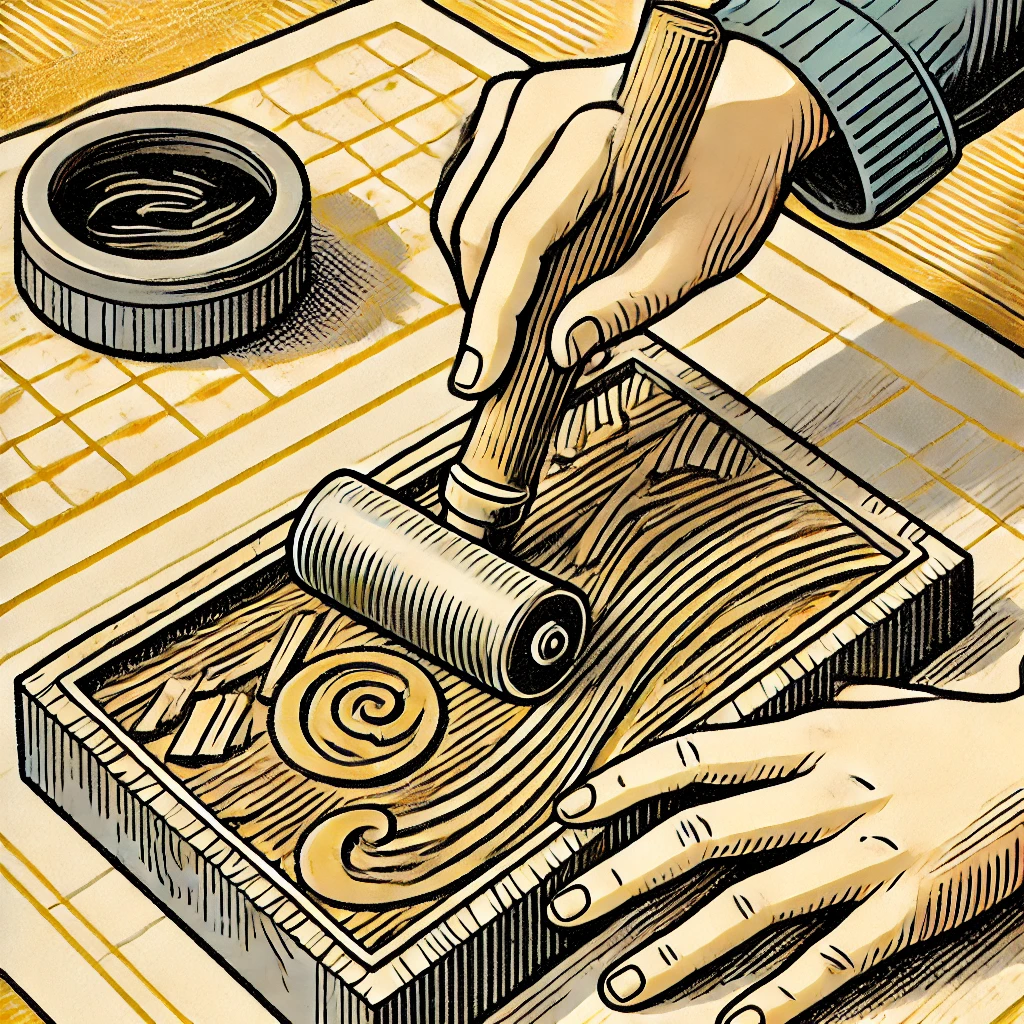
Safety First: Tips for Carving and Printing
Before diving into the process, safety is key. Here are a few safety tips that will help make sure kids stay safe while enjoying block printing:
- Carve Away from the Body: Always remind children to carve away from their bodies. This prevents any risk of accidents if the carving tool slips.
- Non-Dominant Hand Placement: Always keep the non-dominant hand behind the carving tool to avoid injury.
- Supervised Use of Carving Tools: If working with very young children, use soft rubber blocks and child-safe carving tools, or have adults do the carving while kids focus on designing and inking.
- No Walking Around with Tools: Carving tools should stay at the table and should not be carried around.
Step-by-Step Guide to Block Printing for Kids
Step 1: Gather Your Materials
Before starting, make sure to have everything you need:
- Rubber or Linoleum Blocks: Rubber is softer and easier for beginners, while linoleum offers more detail for older kids.
- Carving Tools: V-gouges for finer details and U-gouges for carving out larger areas. Make sure they’re child-friendly and easy to handle.
- Water-Based Ink: Choose non-toxic, water-based ink. Dark colors like black, blue, or red show up best in prints.
- Brayer (Ink Roller): This is used to spread ink evenly over the block.
- Xuan Paper or Printing Paper: Xuan paper is elastic and thin enough to enter grooves and print fine details. Other types of printmaking paper also work well.
- Ceramic or Reclaimed Subway Tiles: For spreading the ink with the roller.
- Markers and Carbon Paper: For highlighting uncarved areas and transferring designs.
- Spoon or Baren: These are used to press the paper onto the inked block.
- Cutting Mat: To protect your work surface while carving.
- (optional) Watercolor
Shop the List of Printmaking Supplies:
Read also:

Step 2: Sketch Your Design
Have kids sketch their designs on regular paper. Encourage them to create simple, bold designs that translate well into prints, such as geometric shapes, flowers, or animals.
Tip: Remember that the design will be mirrored when printed. If the kids want to add text, it’s essential to flip it so it prints the right way. A trick for mirrored text: write the words on tissue paper, tape it against a window, and trace the reverse on the back. Then, use carbon paper to transfer the reversed text onto the block.
Step 3: Transfer the Image
Once the sketch is done, use carbon paper to transfer the design onto the rubber or linoleum block. Place the carbon paper on the block with the design on top, and trace over the lines.
Tip: Use markers to highlight areas that should remain raised (the parts that will be inked). This makes it easier for kids to visualize the positive and negative spaces.
Step 4: Carve the Block
Now it’s time to carve! Start by using a V-gouge for fine lines and edges, and switch to a U-gouge for larger areas. Guide the kids to carve away the negative space—these are the areas that will not be inked.
Tip: Encourage kids to go slow and steady. Carving is all about precision, not speed. Also, be sure they’re following the safety rule of carving away from the body at all times.
Step 5: Ink the Block
Once the block is carved, it’s time to ink! Place a small amount of ink on a ceramic tile or other flat surface. Use the brayer to roll the ink back and forth until it’s spread evenly across the roller. Then, roll the ink over the raised areas of the carved block.
Tip: Avoid using too much ink—a thin, even layer is best for achieving crisp, clean prints. Over-inking can cause smudges or blotches in the final print.
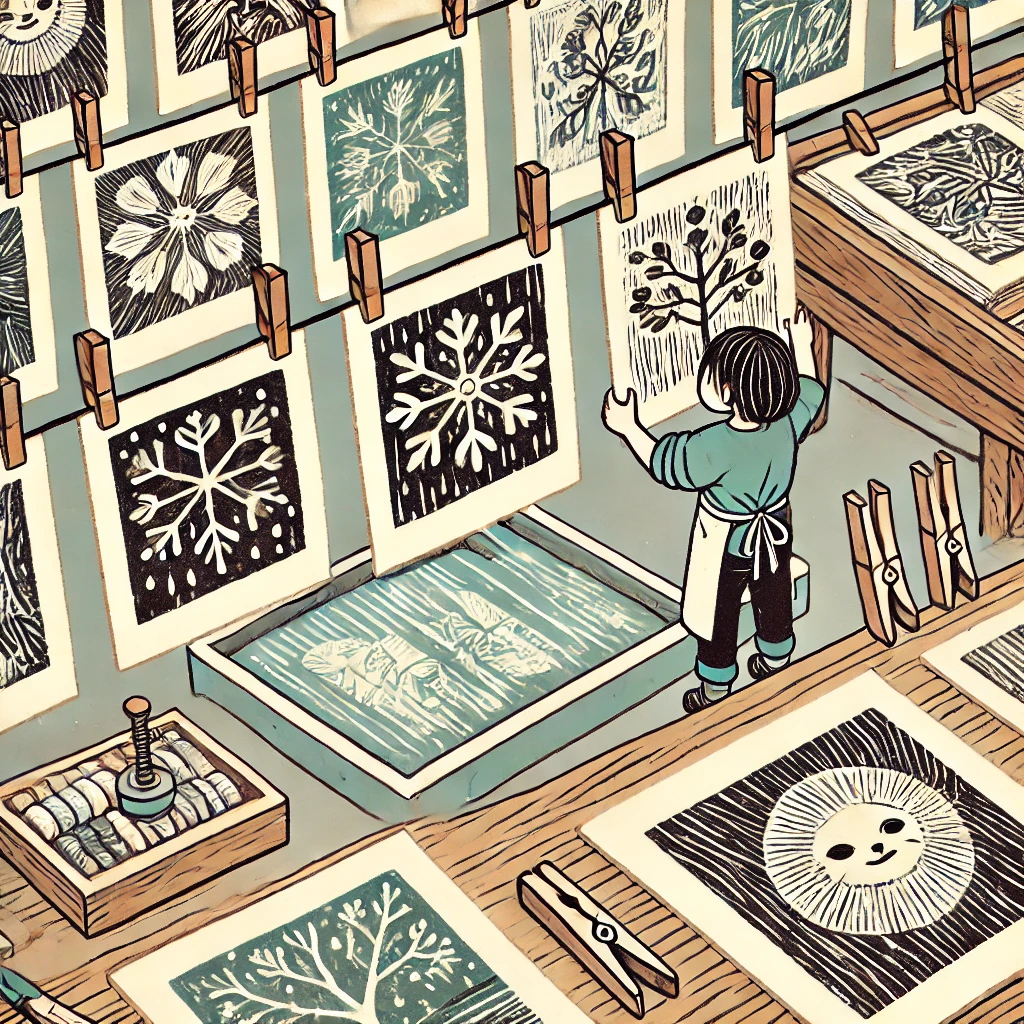
Step 6: Print the Design
Lay a piece of Xuan paper (or printmaking paper) on top of the inked block. The thinness and elasticity of Xuan paper make it perfect for capturing even the smallest details. Use the back of a spoon or a baren to press the paper evenly over the block, ensuring all areas make contact with the ink.
Tip: If you’re printing on fabric (such as a tote bag or t-shirt), follow the same process using fabric-safe ink.
Step 7: Create a Print Series
The best part of block printing is its repeatability. Encourage kids to create a series of prints by stamping multiple times using the same block. They can experiment with different paper types and ink colors to create a collection of prints.
Tip: Teach kids how to title and number their prints like professional printmakers. Use a pencil to lightly label the prints at the bottom (e.g., 1/5 for the first print in a series of five).
Step 8: Dry and Display the Prints
After printing, lay the paper or fabric flat to dry completely. If space is limited, you can hang the prints to dry using clothespins or string.
Tip: Once dry, encourage kids to enhance their prints with watercolors. They can paint the negative space (the areas not inked) to add color and texture to the print, turning it into a mixed-media artwork.

Tips and Tricks for Block Printing Success
- Use Markers to Highlight Carved Areas: After carving, use a marker to highlight any raised spots. This ensures all negative spaces have been carved away.
- Press Evenly for Consistent Prints: When pressing the paper onto the block, make sure the kids press evenly to avoid patchy prints.
- Experiment with Different Surfaces: Block printing isn’t just for paper! You can print on fabric (like tote bags or t-shirts) or even experiment with other materials like wood or clay.
- Watercolor Inking for Extra Creativity: Encourage kids to paint over their prints with watercolors, adding extra color to the negative spaces after printing.
- Teach Printmaking Terminology: Teach kids about editioning their prints—labeling them with numbers like “1/5” to show the print is part of a series. This makes them feel like real artists!
Conclusion: Block Printing is Fun and Approachable
Block printing might seem complex, but with the right materials and guidance, it’s an accessible and incredibly rewarding art form for kids. From the tactile joy of carving to the magic of seeing their designs come to life on paper, block printing engages children in every step of the process.
And with the ability to stamp multiple prints, kids can experiment, create series, and even learn to title and number their artworks.
Encourage kids to take their time, explore different colors, and be proud of the artwork they produce—whether on paper or fabric.
With this guide, block printing becomes a fun, repeatable, and educational activity that kids will enjoy time and time again.
Blockprinting projects to try:
- Yayoi Kusama-Inspired Halloween Block Printing Project for Kids: Pumpkin Stamp Printmaking Tutorial
- Mariachi Skulls & Día de los Muertos: A Creative Woodblock Printing Project for Kids
Save for Later:

